If you want your organization to function like a well-oiled machine, you need to provide them with a central place where they can access all the essential information they need.
Whether that’s information about your software products, company policies, documentation for software updates, or something else from the deep well of knowledge, it needs to be easy to find, use, edit, and maintain.
Your best bet is to create an internal knowledge base. But how, you might be asking?
Luckily, in this article, we’ll present you with the best current software solutions for internal knowledge bases on the market.
Ready? Let’s begin!
Archbee
Archbee is a great tool for creating and managing your internal knowledge base. It has many useful features that set it apart from its competitors.
For example, when you create documentation in Archbee, you separate it into Spaces.
For each Space, you can set who can access it, which means you can determine which documents will be available to the public and which are only for your internal company use.
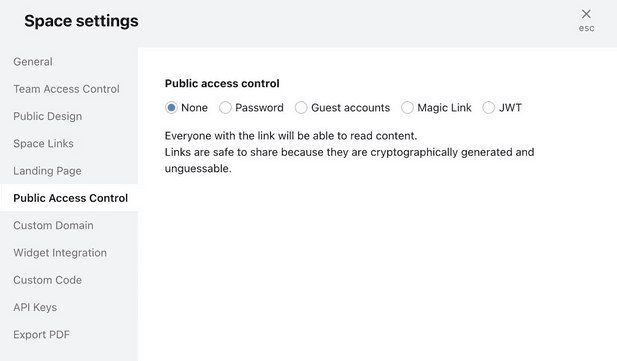
Source: Archbee
That means you don’t need separate knowledge bases for your product users and your team.
Everything can be in one place, and you get to choose which documentation is for external and which is only for internal use.
And when you build your internal knowledge base in Archbee, collaboration with your team in it is easy and intuitive.
Tom Johnson, Senior Technical Writer at Google, also pointed out how easy it is to create and collaborate in Archbee:
The UI is 100% intuitive and nearly everyone in a company would be able to start creating content without any special training or orientation.
You can add comments in documents and reply to them, tag or mention team members, which sends them a notification, etc.
In short, collaboration on your internal documents is easy and fast.
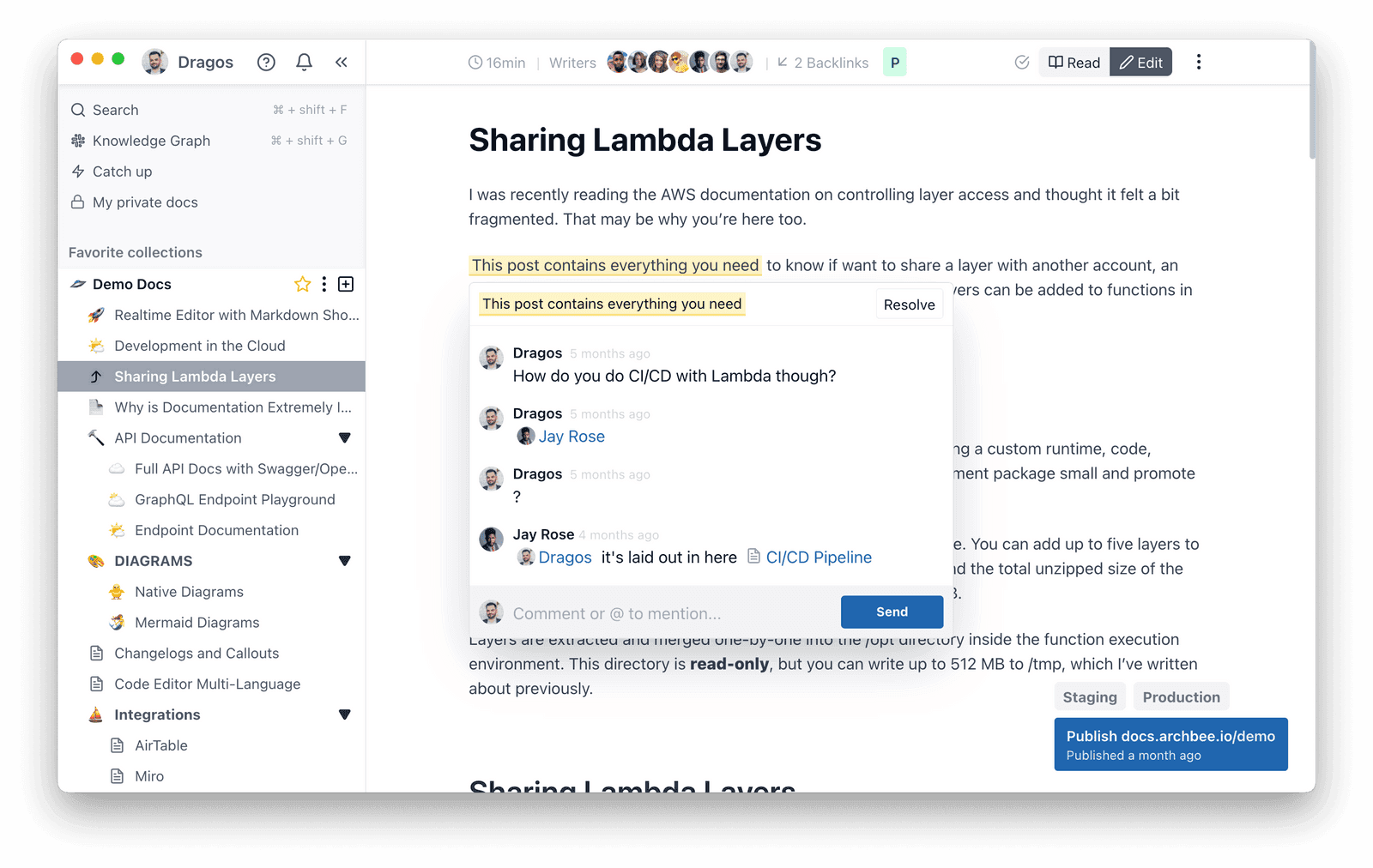
Source: Archbee
Regarding pricing, Archbee plans range from a free Starter plan to an Enterprise plan for large corporations.
It’s worth mentioning that there’s a sizable discount if you sign up for an annual plan instead of a monthly one.
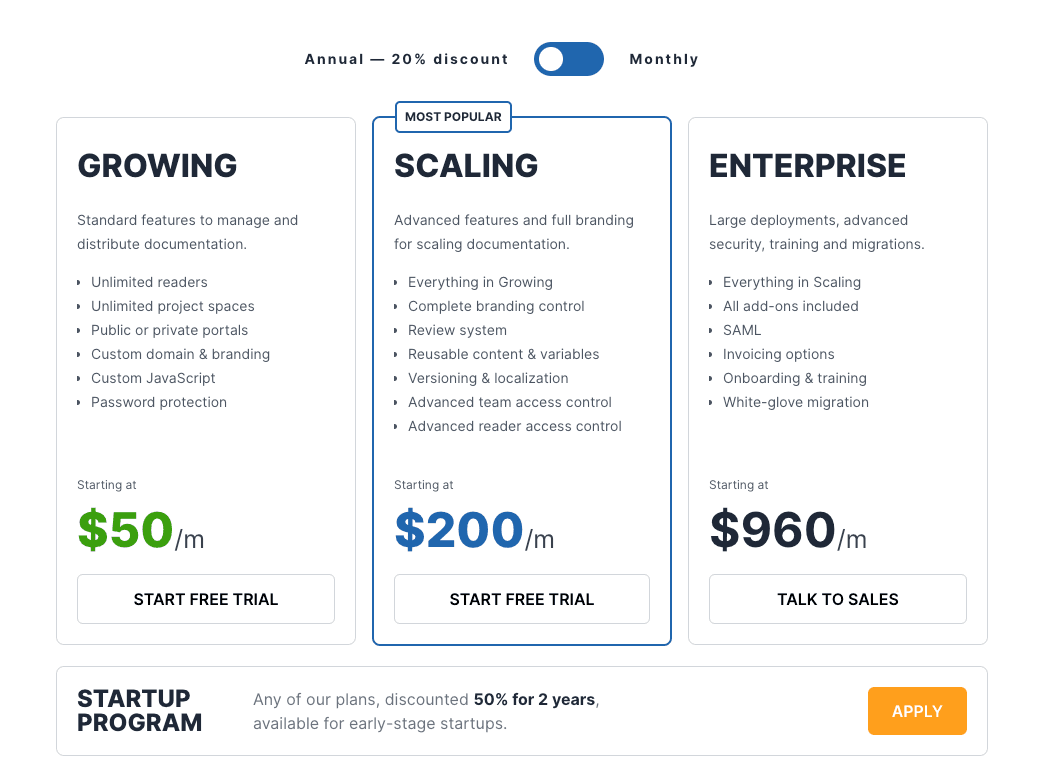
There are many more useful features in Archbee that can help you create and manage an internal knowledge base that we didn’t mention here, so it’s a tool that’s definitely worth considering.
Confluence
Atlassian is a company that owns some of the most well-known software products for work management, organization, and documentation, like Jira and Trello.
If you use some of them, Confluence can be a good choice for your internal documentation.
Why?
Because one of its most useful features is integration with other tools in Atlassian’s catalog.
For example, you can connect Jira and Confluence to keep your team in sync while creating and managing your internal knowledge base, tracking your progress, etc.
Atlassian’s products aren’t the only ones Confluence works well with. One of its strong sides is the option to customize it with numerous other software solutions.
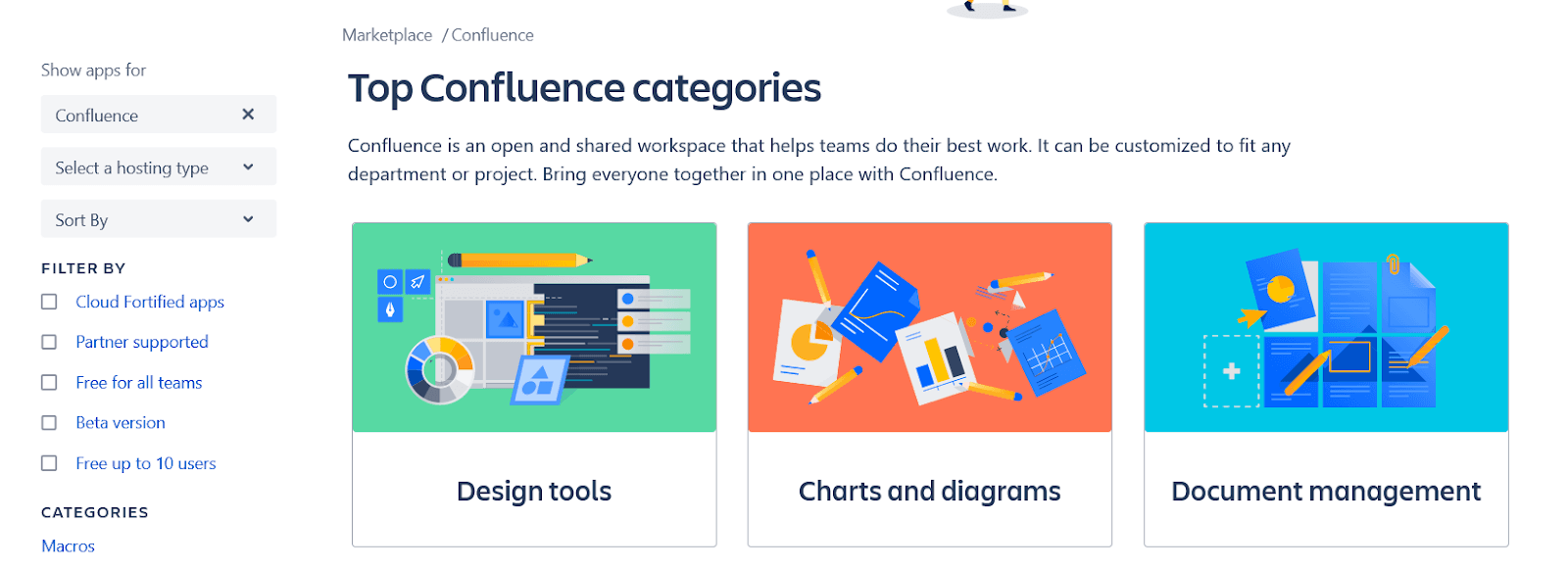
Source: Confluence
You can integrate Confluence with hundreds of other apps to create a personalized tool for your internal knowledge base.
When it comes to its features, Confluence offers page versioning, robust security options, real-time editing and commenting, etc.
Also, if you often work on the go, a Confluence mobile app for Android and iOS keeps you connected to your team and syncs your work across all your devices.

Source: Confluence
However, all of that makes Confluence a tool with a steep learning curve, as many of its users point out.
Confluence is available for free with limited functionality and up to ten users. There are three more paid plans, and the price depends on the number of users in your team.

Source: Confluence
To sum up, Confluence’s main advantages are its integration and customization options.
If you use other Atlassian software products, this might be the right knowledge base software for you.
Document360
Document360 is another popular knowledge base platform for creating external and internal resources.
This software solution focuses on providing a very user-friendly experience.
The interface is intuitive, has many options for integrating with other software tools, and offers a WYSIWYG editor or writing content in Markdown.
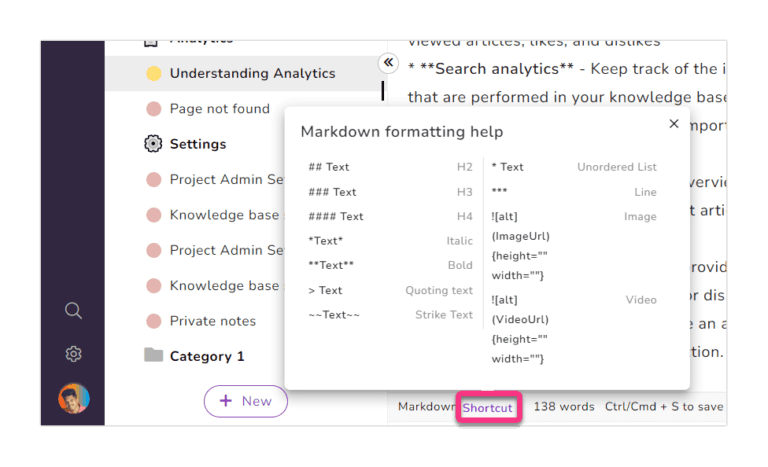
Source: Document360
However, Document360 goes a step further in providing a seamless experience with its feature of migrating content from another knowledge base.
In other words, if you use another tool for creating a knowledge base, Document360’s team can do all the work for you and transfer content to their software.
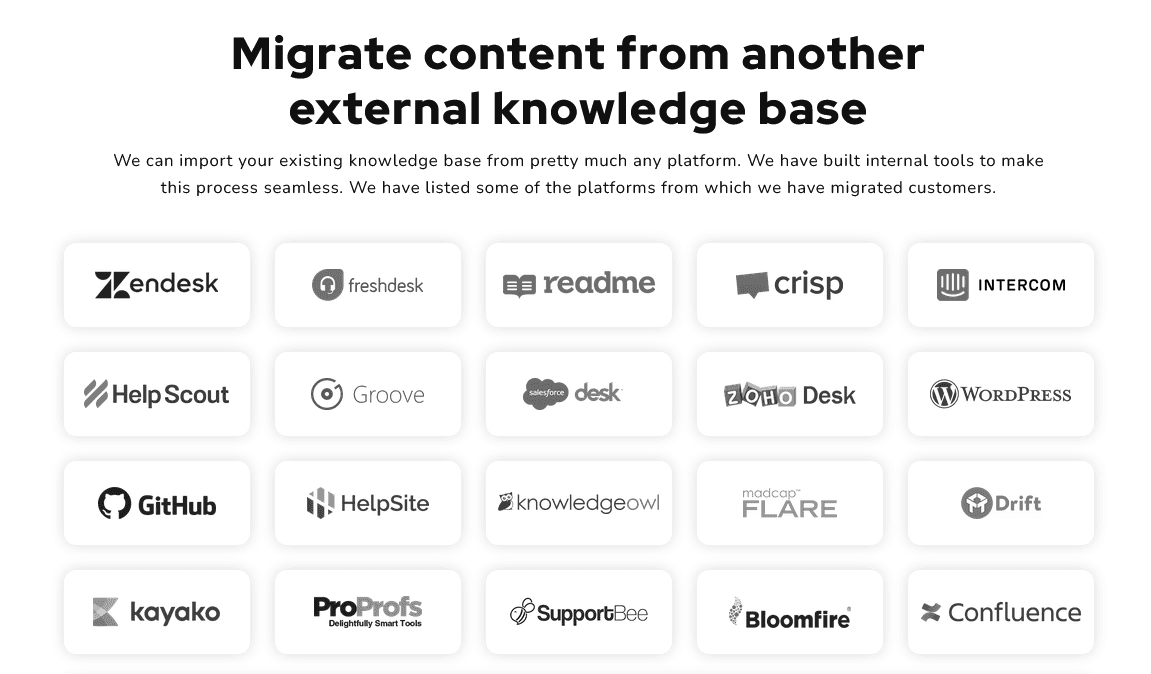
Source: Document360
If you opt for Document360 for your internal knowledge base needs, you should be aware of their pricing plans.
They have five paid plans, ranging from Standard to Enterprise Plus. However, the most affordable ones only allow you to create a public knowledge base.
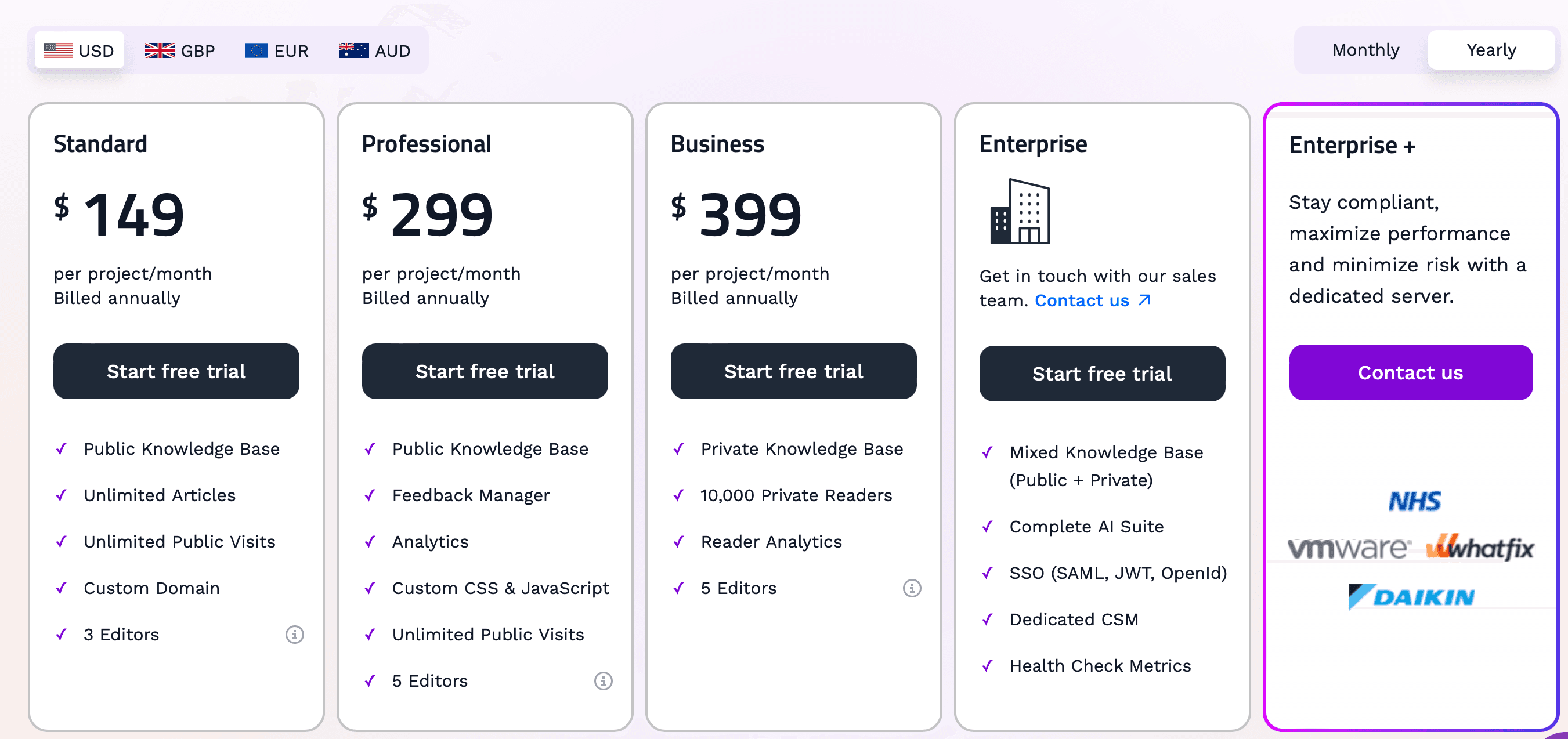
Source: Document 360
If you want to use Document360 for internal purposes, the cheapest plan is Business, for $399 per project, per month.
You can also create multiple knowledge base versions, but you’ll need to pay extra. The amount depends on the plan.
However, Document360 is a user-friendly and intuitive tool with plenty of options to create an internal knowledge base. And, if you are looking for a Document360 alternative, we got an answer for you.
GitBook
Gitbook is a modern documentation tool that allows you to build an internal knowledge base using various helpful features.
This tool is convenient for developers since it supports features like code snippets, Markdown, Git branches, and integration with GitHub.
However, there aren’t many more tools to integrate GitBook with; currently, only 13 are available for integration.
To compensate for that, GitBook comes with many pre-installed apps that you can use.
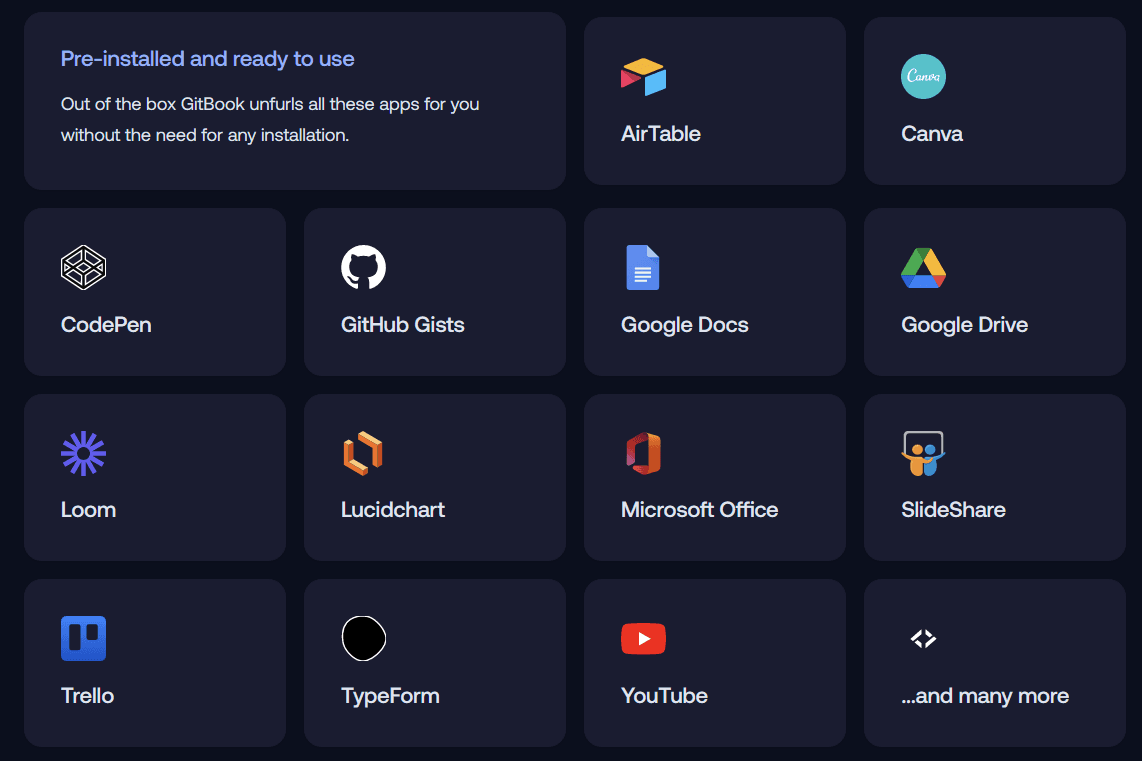
Source: GitBook
One of the most valuable features of GitBook is easy content importing.
You can import content from, for instance, Google Docs, Dropbox Paper or sync with an existing Git branch.
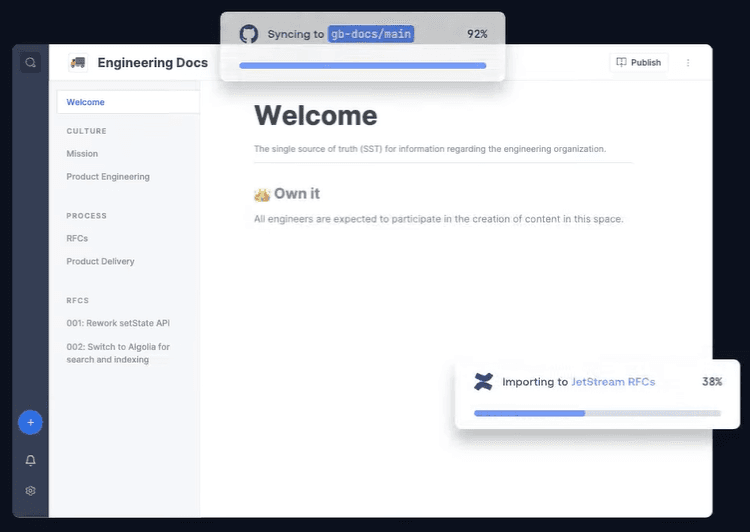
Source: GitBook
Then you can use the block-based editor to arrange the imported content according to your preferences.
In addition to importing, GitBook provides many templates for content creation, so you never have to start from a blank page.
When it comes to pricing plans, there are four to choose from.
There is a free plan with essential features and others you would need to pay for per user per month.

Source: Gitbook
You can also get two months free if you choose to get annual plans instead of monthly.
Overall, GitBook is an intuitive knowledge base software, especially for developers and other technical professionals already familiar with Git.
Guru
Guru is a knowledge base software that provides users with all the features they expect from such a tool.
Still, they added some interesting elements that make them different from similar software solutions.
When it comes to creating a knowledge base, you can use Guru’s editor to write content from scratch or import it from other sources.
Also, a browser extension allows you to capture information anywhere and turn it into cards you can later add to your knowledge base.

Source: Guru
That’s not the only way to turn content from other sources into knowledge base content—with a Slack integration, you can extract information from there and publish it in your knowledge base.
However, the main selling point of Guru is its use of AI.
Their software uses AI to, for instance, detect duplicate content, suggest content tags, and analyze the usage of your internal knowledge base.
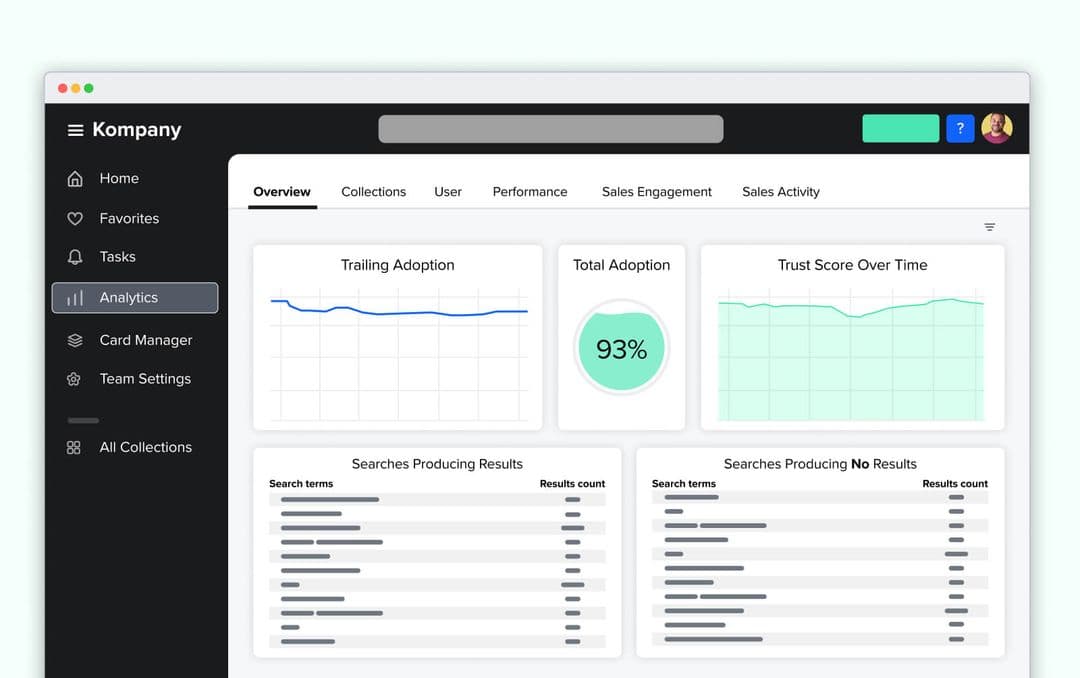
Source: Guru
However, all of those features that make Guru different from other software solutions require learning and getting used to, so that can be a possible downside.
Guru is free if you have a team of three people or less, while paid plans start from $5 per user per month.

Source: Guru
If you are looking for a knowledge base software with a different approach to content creation and some unique features that you’ll need to learn to use, Guru might be an intriguing solution.
Helpjuice
Helpjuice is an internal knowledge base tool that emphasizes its customizable and analytical features as advantages over other solutions.
When creating content with Helpjuice, you get a wide range of options in their editor.
You can drag and drop files directly into the editor, manipulate images and videos, collaborate with other team members on articles, etc.
In addition to those features you would expect from a knowledge base software, Helpjuice has many options to customize your knowledge base and make it unique.
You can choose from dozens of pre-designed themes, but you can also further customize basically every element of your knowledge base.

Source: Helpjuice
Another useful area that Helpjuice’s team put a lot of effort into is analytics.
You can see certain data in the editor with the analytics preview, which shows you the impact your content has on your users—more precisely, how many people read it and find it helpful.
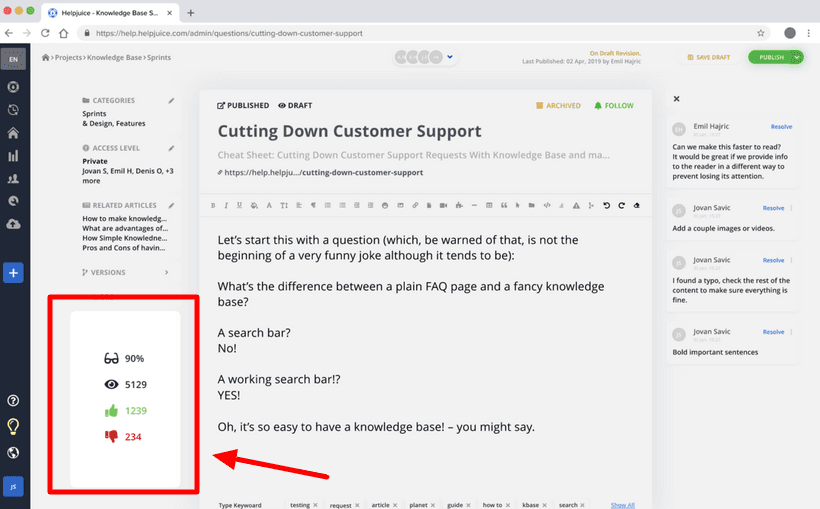
Source: Helpjuice
That’s just the tip of the iceberg when it comes to analytics.
Helpjuice allows you to see which keywords users search the most, what categories they consume, your employees’ activities and productivity, and measure the articles’ impact on users.

Source: Helpjuice
For those and other features Helpjuice offers, you might need to reach deeper into your pockets than for most of the other knowledge base solutions.
For example, all four pricing plans provide all features to customers, but even the Starters plan is $120 a month for up to four users.

Source: Helpjuice
If you can afford it, Helpjuice can be very useful for creating a comprehensive internal knowledge base.
Notion
Notion is a tool that aims to replace several software solutions and put all their functions into one.
In other words, you can centralize all of your company knowledge in a wiki, keep your documentation, and manage projects—all in one place.
For internal knowledge base purposes, centralizing knowledge in a wiki, as the Notion team calls it, is what’s relevant.
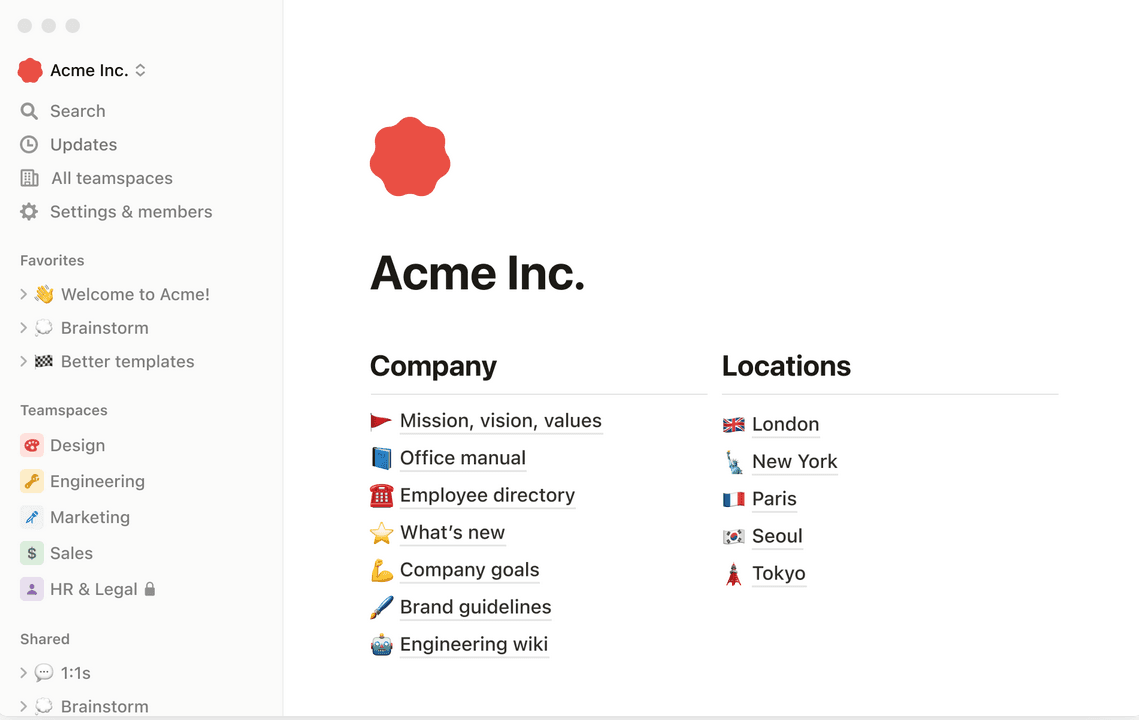
Source: Notion
Notion’s wiki has a drag-and-drop functionality, a search function, and other features you would expect from software like this.
In addition to that, there’s a Synced Blocks feature, which can save you time and effort by syncing changes in the content you have in multiple places in your knowledge base.
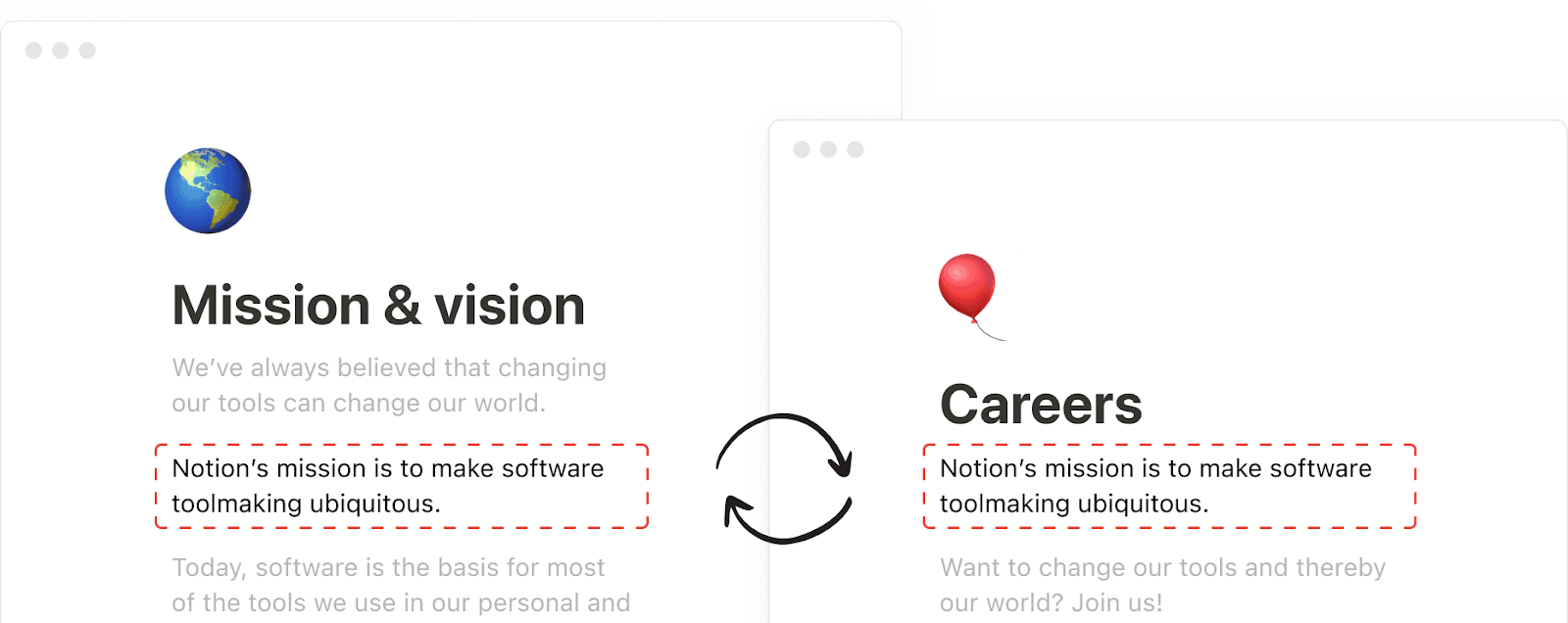
Source: Notion
Simply put, when you make a change in one place in your documentation, the software automatically makes the same change in the other.
Notion also has an AI assistant that you can get by paying extra. It can help you write summaries, takeaways, and other simple types of text that can take up a lot of time.
There’s no doubt that Notion is a powerful tool, with its versatility and plethora of features.
However, that can also be regarded as a downside because users might see it as too intimidating to learn or simply use just a fraction of its possibilities.
When it comes to the price, Notion’s plans range from Free to Enterprise, each with its own set of features.
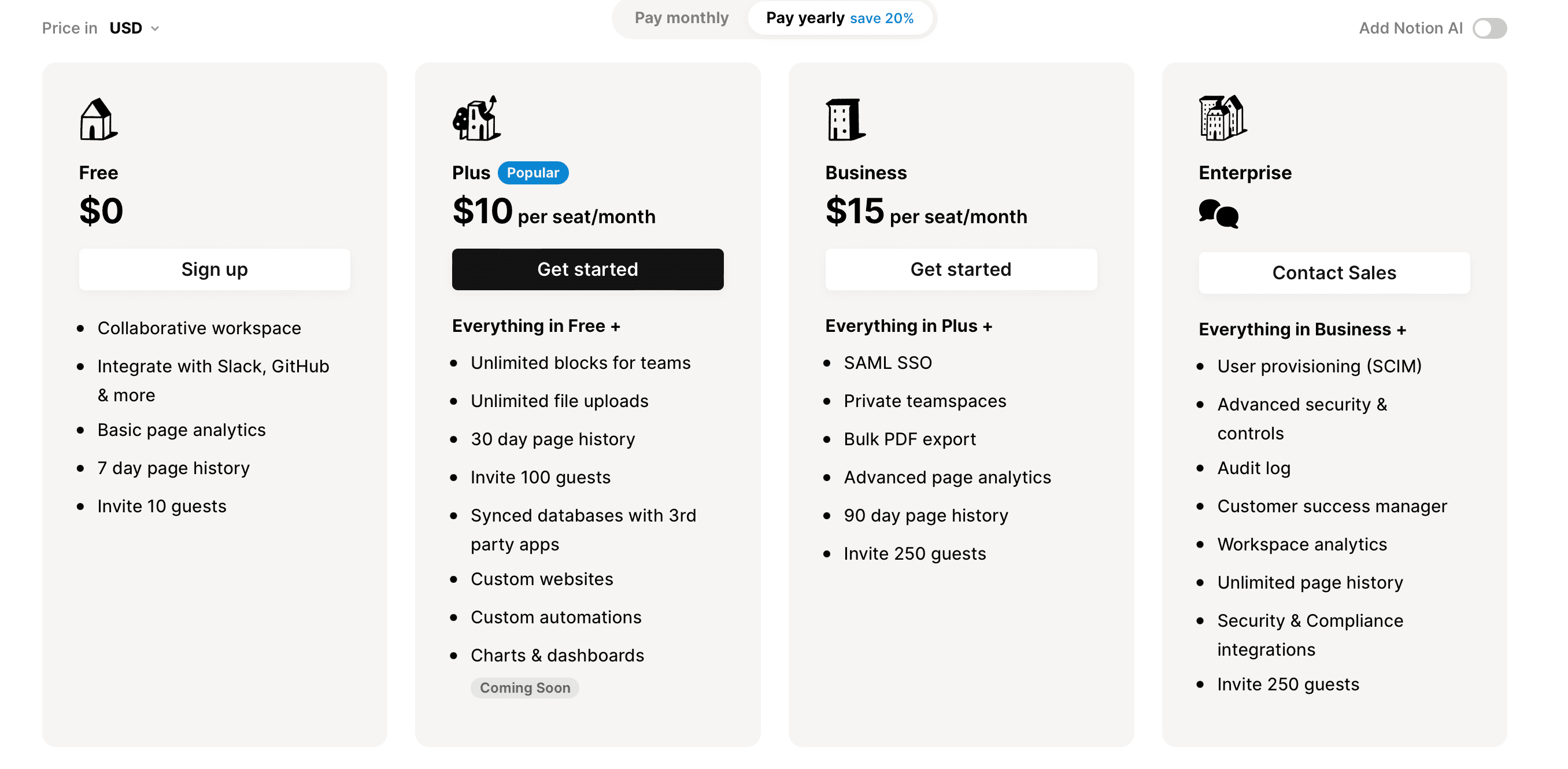
Source: Notion
Although Notion isn’t strictly an internal knowledge base software, its features allow you to create a valuable resource for your company.
Nuclino
Nuclino is a knowledge base software product that focuses on simplicity.
It’s not as feature-packed as some other software solutions mentioned earlier, but it has everything you need to build a functional internal knowledge base.
The design is clean and simple, eliminating clutter and reducing the chances of overwhelming the users.
Nuclino aims to solve all your team needs, from storing company knowledge to managing projects and tasks.
That’s why it offers several ways of viewing your work. For example, a list view is suitable for organizing docs, while the graph view is great for visualizing information.
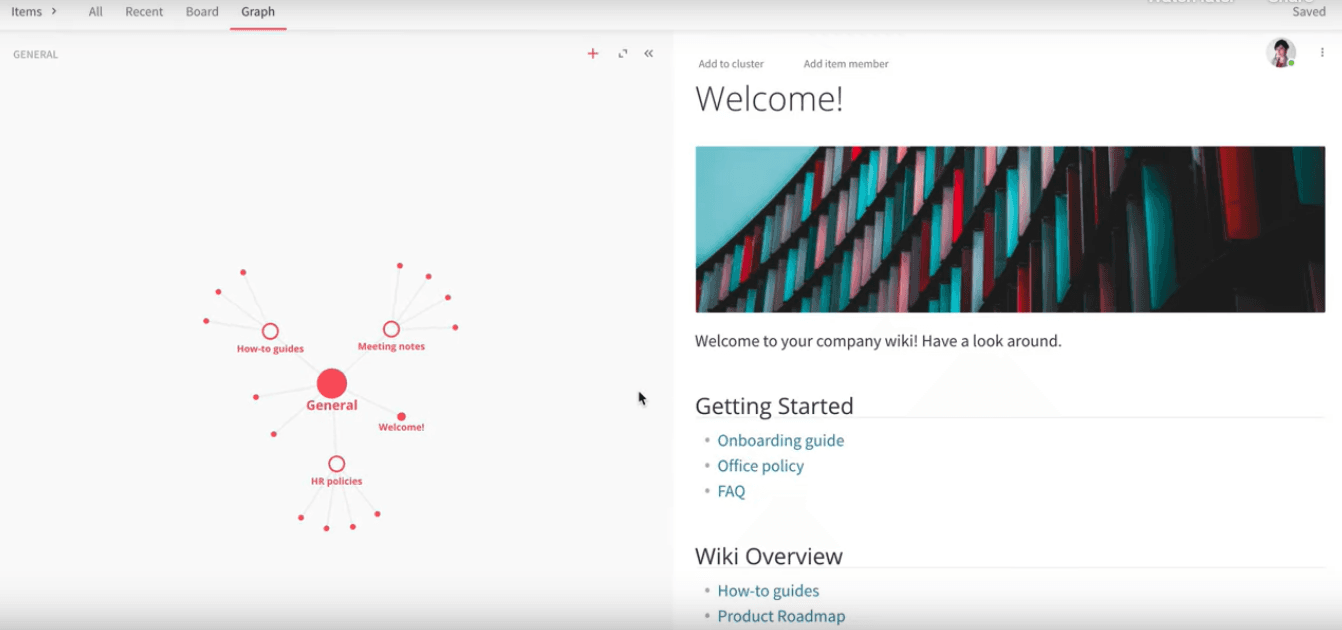
Source: Notion
Nuclino also focuses on connecting your team and being available anywhere and anytime.
Therefore, you can use it as a mobile app, on Windows computers, MacOS, and Linux, as well as in web browsers.

Source: Google Play
Nuclino’s focus on simplicity can be a downside to some users.
For instance, on TrustRadius and Capterra, well-known websites for software reviews and comparisons, some users criticize the lack of formatting options and Nuclino’s price if you want to use it for larger teams.
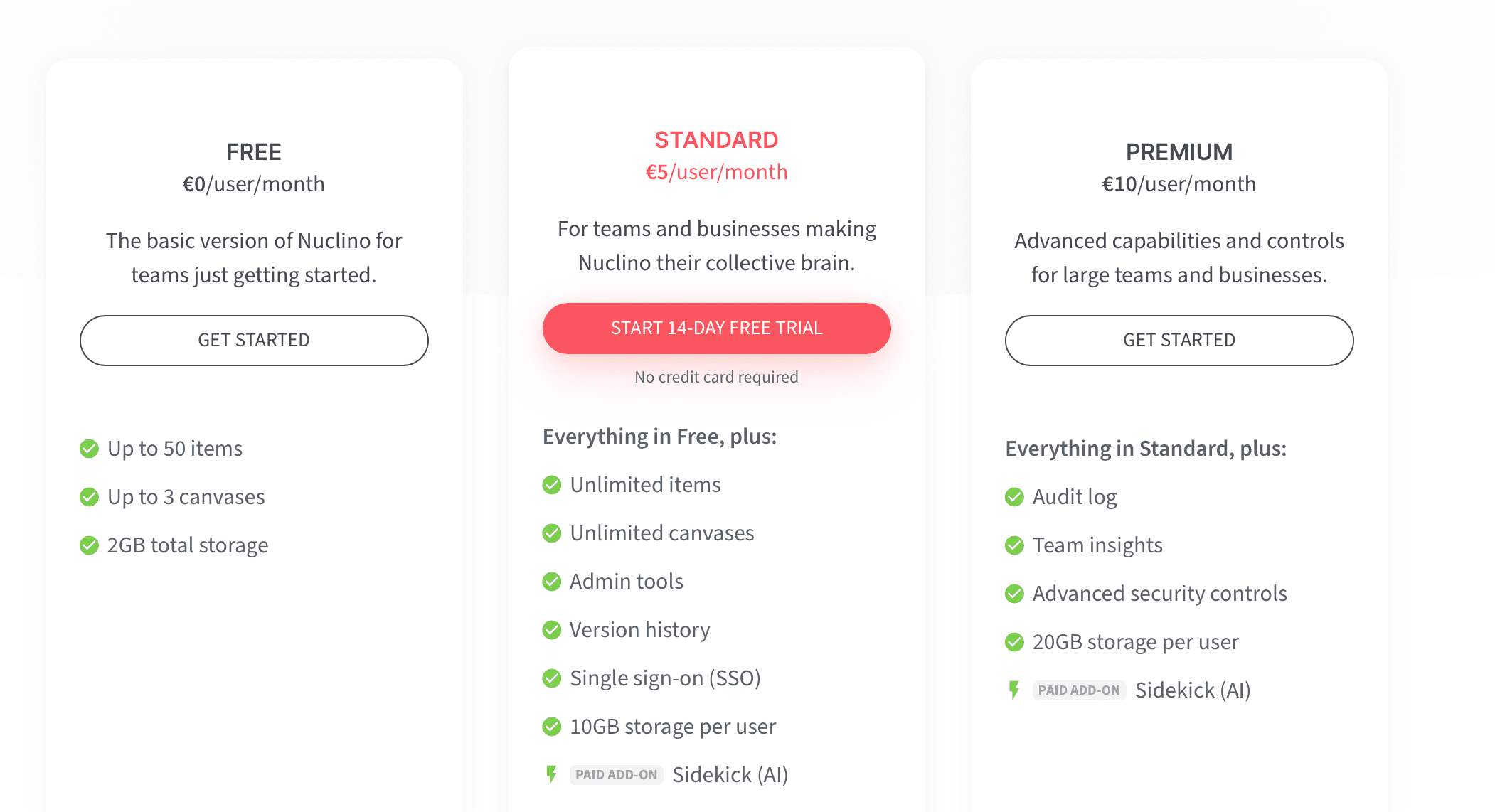
Source: Nuclino
Overall, if you have a smaller team that needs a software solution with simple design and functional features, Nuclino might be worth considering.
Speaking about Nuclino, if you are looking for a Nuclino alternative, we have the perfect answer for you.
Slite
Slite is a robust knowledge base software solution with many features that can help you build a high-quality knowledge base for your organization.
It has an editor that’s simple to use and versatile. In addition to writing documentation in it, you can collaborate with your team in a document, drag and drop content, use Markdown, etc.
Also, Slite comes with dozens of useful templates, so you don’t have to start from scratch.
For example, a template for a brand guidelines document has an already written text that you only need to personalize with the information about your specific brand.
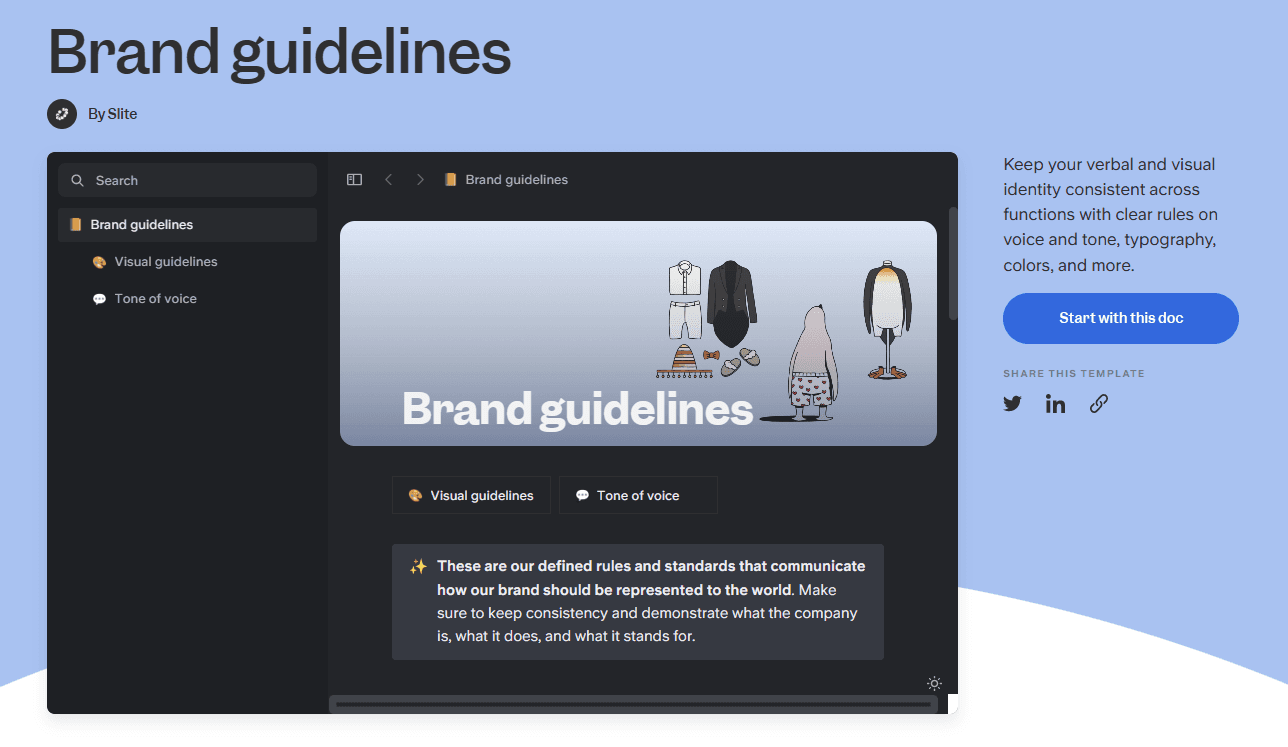
Source: Slite
As you probably already know, an internal knowledge base can grow into a detailed resource that’s challenging to keep up with after some time, especially if it has many contributors.
That’s why Slite has a “Catch up” section where you can see which documentation was recently edited, when, and by whom.

Source: Slite
That way, it’s easier to keep track of changes, even if you have an extensive knowledge base.
And if you have a specific question that a search function can’t answer, you can use Ask, an AI-powered assistant.

Source: Slite
Ask searches through your knowledge base and provides an answer based on the information it has access to.
When it comes to pricing, Slite is available in three regular plans.

Source: Slite
A custom Enterprise plan is also available, and its price depends on the organization’s size, features included, etc.
Despite its many features, Slite is user-friendly. However, teams who want a simple knowledge base software could find everything Slite offers overwhelming.
Tettra
Tettra leans toward more straightforward software solutions for creating a knowledge base.
It isn’t overstuffed with features and doesn’t try to be an all-encompassing software solution for your team’s needs.
Instead, the focus is on creating a company wiki where the employees can create, edit, and access the information they need to do their jobs.
What is different about Tettra is that it’s specifically built to work with Slack.
For instance, you can answer questions in Slack with the knowledge you already have in your knowledge base built with Tettra.
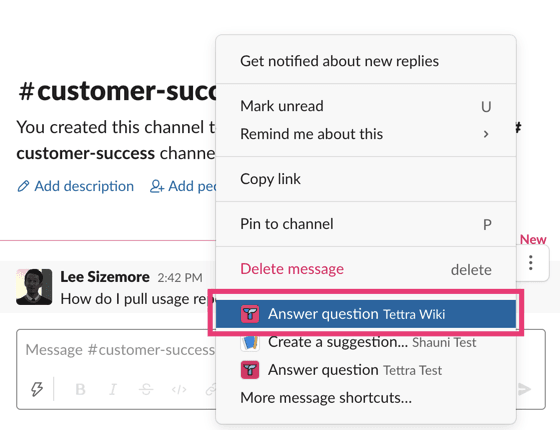
Source: Tettra
Also, you can search for information in the knowledge base without leaving Slack, set up notifications about changes in the knowledge base, etc.
That tight integration with Slack is great, but only if your team uses Slack. If you use another communication tool, many of Tettra’s unique features simply aren’t available.
On the other hand, Tettra has interesting features that don’t require Slack.
One of them is asking experts in your team questions, which then, along with the answers, stay in the knowledge base for others to use as a part of helpful content.
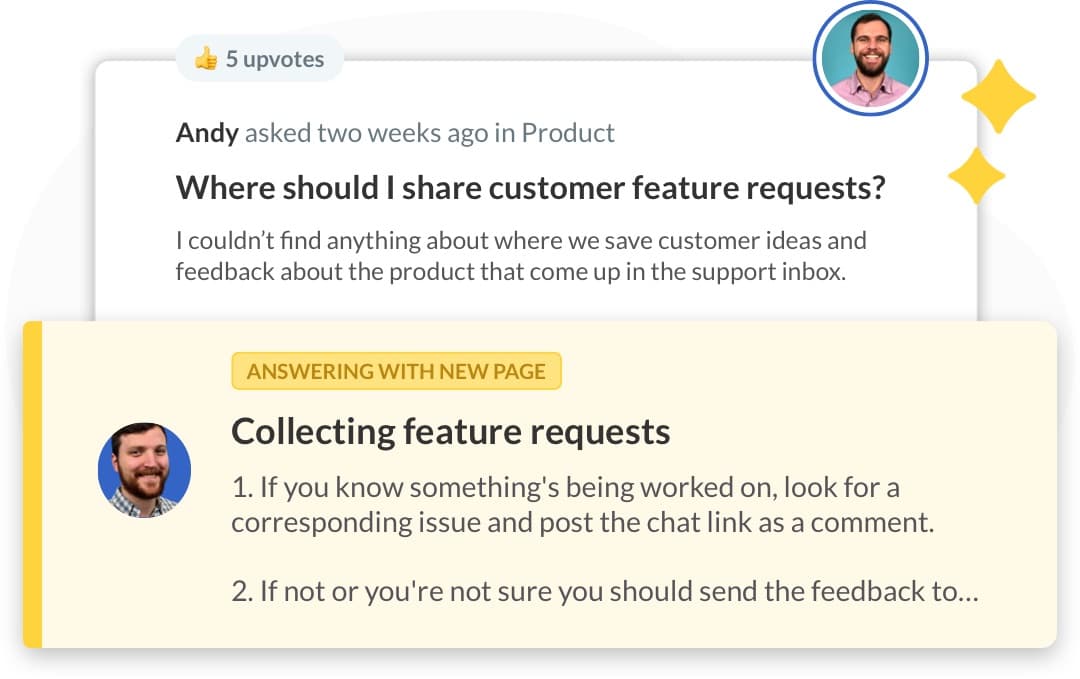
Source: Tettra
If you opt for Tettra as your knowledge base software, you can get it for free with basic functions or in one of the paid plans they offer.
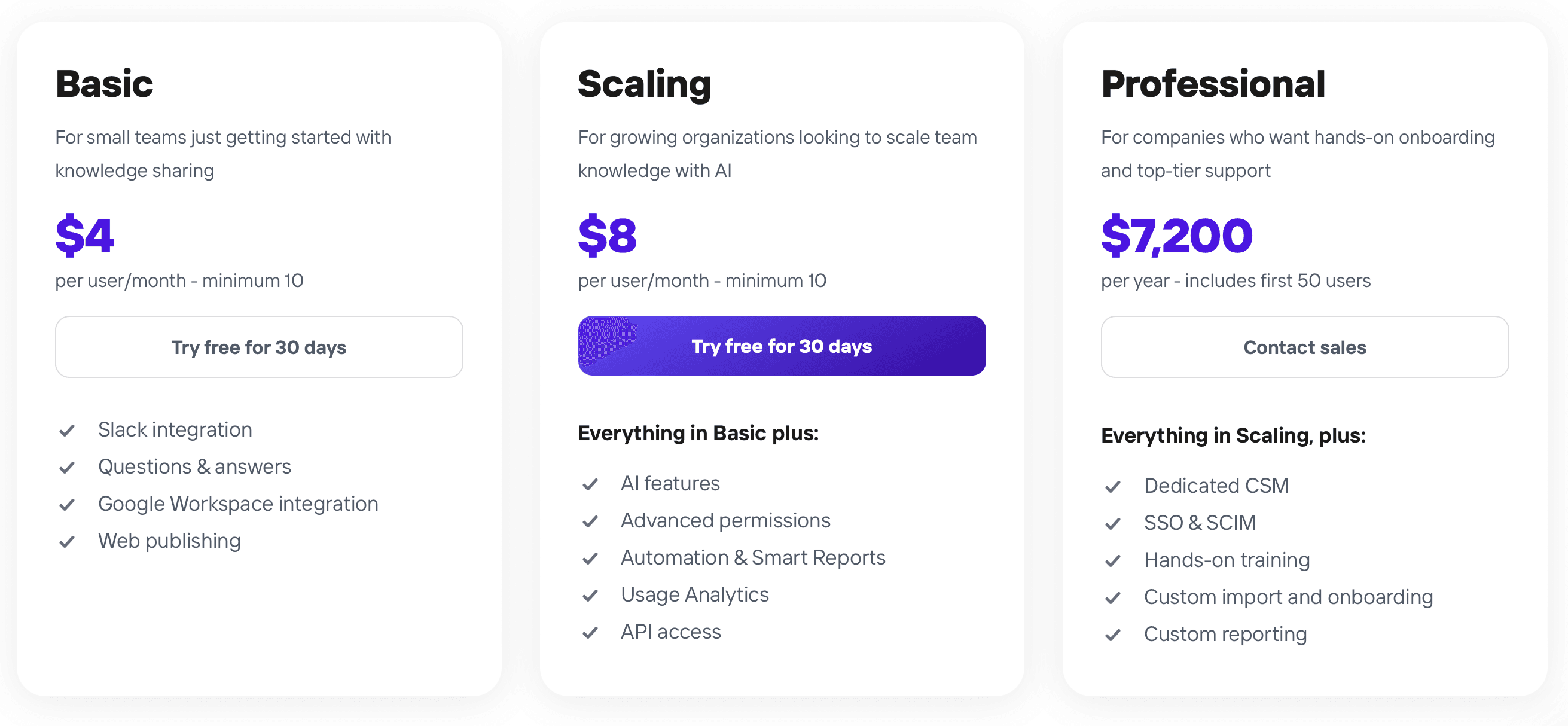
Source: Tettra
To sum up, if you use Slack in your organization, Tettra can be a valuable software solution.
But even without that integration, it has basic features for creating a good knowledge base.
Speaking about Tettra, Archbee is actually a very good and performant option as an Tettra alternative!
Conclusion
Internal knowledge base software is essential for organizations to streamline their knowledge management processes and enhance productivity.
However, selecting the best solution for your organization can be daunting.
Each one offers unique features and benefits, catering to the diverse needs of various organizations.
Ultimately, the best solution will depend on your specific requirements and budget.
We hope that this article provided you with some clarity about what is out there to choose from and what might be the best for you and your team.
You can try the Archbee trial for free here.
Frequently Asked Questions
Archbee is a documentation platform that lets you centralize product docs and company knowledge in one place.
- Organize with Spaces: Structure content into Spaces and set granular access controls, so you can keep some Spaces private for internal use while making others public for customers.
- Collaborate in real time: Comment, mention teammates, and get notifications to speed up reviews and keep content accurate and up to date.
- Use one hub for everyone: Publish both internal and external docs from the same workspace without duplicating effort.
- Pricing: Plans range from a free Starter tier to Enterprise, with discounts for annual billing.
Best for teams that want a single source of truth with straightforward permissions and fast, intuitive collaboration.
